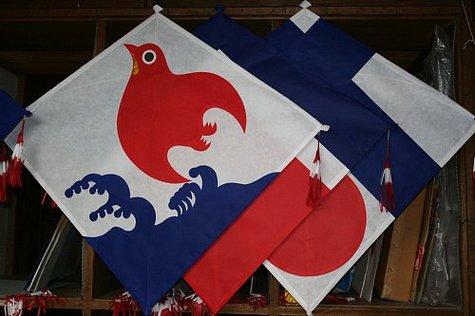Kites (ハタ)
The Nagasaki Hata Flying Contest, where colorful kites soar in the fresh spring breeze, is a fascinating event!
- Area
- Nagasaki City
- Category
- Souvenir
-
Added to "My Favorite" list
Remove from your list
Add to "My Favorite" list
- 1464views
In Nagasaki, a kite is called a "hata.” Hata flying is one of the three major events in Nagasaki, along with Nagasaki Kunchi and Shoronagashi.
It is said that there are two types of kites introduced to Japan, one Chinese and the other of southern origin, and it is believed that Nagasaki's hata, or chinabata, is of southern origin and was introduced by Indonesians who came to Dejima as followers of the Dutch.
The Nagasaki hata pattern is characterized by cutting and peeling together brush-dyed washi paper, rather than applying colors to blank paper. The basic colors are white, blue, and red (the base colors of the washi), with black used on rare occasions.
The colors used are basically white, blue, and red, with black used on rare occasions. The designs are often simple and extremely patterned with national flags, winds, family crests, birds, animals, seasonal flowers, fish, Dutch characters, etc. They are made to stand out when they soar high in the air. There are said to be as many as 200 or 300 types of hata patterns.
In addition, when hata contests were in their hayday, there were many original designs called "inshi-tobi" (paper tobi). Incidentally, "Maple on the water", which is still made as a standard item today, is famous as the inshi-obi of Hikoma Ueno, who is said to be the founder of the photography world in Japan. Nowadays, they are made by companies, associations, alumni associations, etc. for advertising purposes and as souvenirs.
Information
| Address | 長崎県長崎市 | |
|---|---|---|
| TEL | 095-895-2621(Nagasaki Prefecture Product Brand Promotion Division) |



